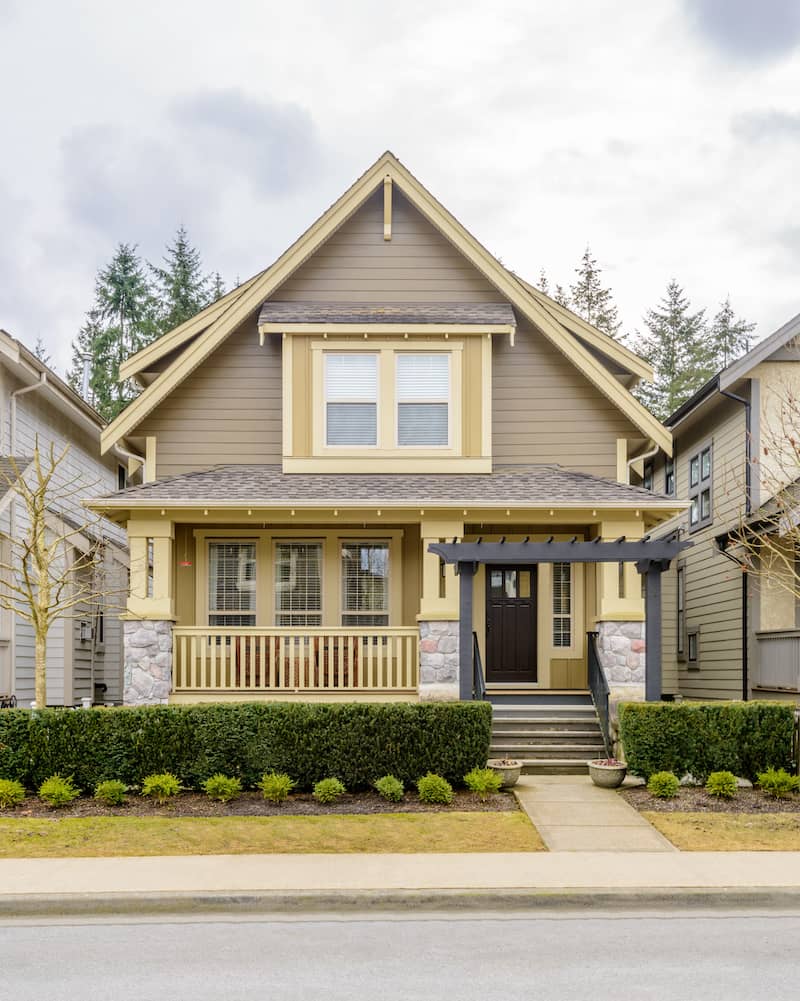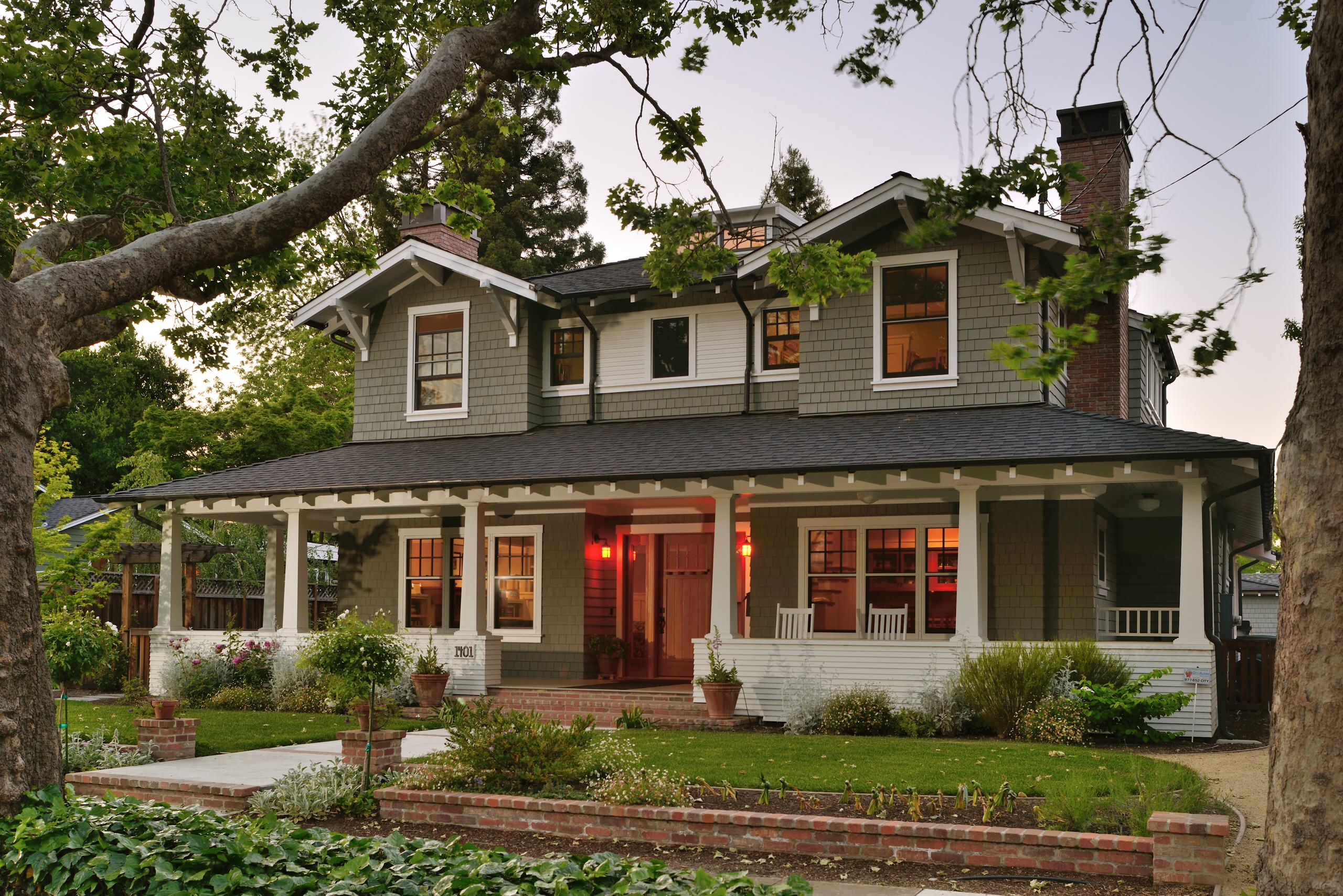Top 7 Inspiring Tips for a Beautiful craftsman style house
Wiki Article
The Duty of Arts & & Crafts Architects in Elevating Architectural Providers in Residential Layout
Arts and Crafts architects considerably influence property layout with their dedication to workmanship and sustainability. They focus on handmade information and all-natural materials, which boost both visual appeals and neighborhood identification. By involving customers in the layout process, these architects create one-of-a-kind space that resonate with individual preferences. This strategy questions regarding the future trajectory of residential architecture and its prospective effect on community dynamics. craftsman style house. What exists ahead for this ageless layout approach?
The Principles of Arts and Crafts Architecture
The significance of Arts and Crafts architecture depends on its commitment to craftsmanship and simpleness. This architectural movement arised in the late 19th century as a reaction to industrialization, highlighting the value of handmade information and natural materials. The concepts of Arts and Crafts architecture focus on functionality and consistency with the environment. Frameworks normally include low-pitched roofing systems, large eaves, and subjected rafters, advertising a feeling of unity with nature.Artisans played a substantial function in this style, frequently integrating attractive components like stained glass, ceramic tiles, and woodwork, which show regional workmanship. The shade scheme often tends to be earthy and controlled, allowing buildings to mix flawlessly right into their surroundings. Additionally, the style motivates open layout and common rooms, cultivating a sense of togetherness. Overall, the concepts of Arts and Crafts architecture commemorate the elegance of simplicity and the relevance of human connection to both nature and area.
:max_bytes(150000):strip_icc()/3FraserLivingRoomFireplace-afa2735100754029985d3994bfd422f8.jpg)
Lasting Practices in Residential Layout
While the demand for eco responsible living proceeds to grow, sustainable methods in household style have actually acquired significant traction among architects and property owners alike. Architects are increasingly incorporating energy-efficient innovations and lasting products into their designs, intending to lower carbon footprints and improve power conservation. Strategies such as easy solar layout, eco-friendly roofing systems, and rain harvesting systems are coming to be common parts of modern property architecture.Furthermore, the selection of locally sourced materials decreases transport exhausts and supports regional economies. Emphasis on natural light and ventilation not just enhances indoor air quality however also reduces dependence on fabricated illumination and climate control systems. These sustainable methods show a commitment to maintaining the atmosphere while giving property owners with comfortable, efficient living spaces. As awareness of ecological issues expands, the combination of sustainability in residential layout is positioned to become a specifying quality of contemporary architecture, assisted by the principles developed by Arts and Crafts architects.
Modification and Personalization in Home Style
Customization and personalization in home layout have actually become essential trends in response to the expanding need for distinct living settings that reflect private preferences and lifestyles. House owners significantly look for to customize spaces that reverberate with their individualities, bring about a more purposeful connection with their space. craftsman style house. This activity urges architects to involve clients in the style process, promoting cooperation that assures the final outcome embodies the house owner's visionAspects such as bespoke designs, personalized products, and tailored finishes permit for a varied array of expressions in household design. Arts and Crafts architects play an essential duty in this advancement, stressing craftsmanship and quality. Their emphasis on integrating imaginative aspects with functionality published here assurances that each home is not just cosmetically pleasing yet also distinctively fit to the citizens' needs. Subsequently, this focus on customization enhances the overall property experience, producing areas that are both personal and long-lasting.

The Influence of Arts and Crafts Architects on Community Aesthetics
As areas evolve, the influence of Arts and Crafts architects greatly forms their aesthetic landscape. By emphasizing handcrafted details, natural products, and conventional building and construction methods, these architects produce homes that resonate with their surroundings. Their layouts commonly include local flora, appearances, and colors, cultivating a sense of consistency between constructed environments and nature.The Arts and Crafts movement promotes community identity with building connection. By motivating homeowners to adopt similar style concepts, communities establish a natural personality that boosts visual appeal. This building uniformity not only enhances the aesthetic experience but also infuses a sense of satisfaction among locals.
The emphasis on sustainability and craftsmanship in Arts and Crafts architecture lines up with modern worths, making these styles appropriate in modern setups. Eventually, Arts and Crafts architects add significantly to the total elegance and cultural honesty of neighborhoods, leaving a long-term influence on their visual legacy.

Future Trends in Arts and Crafts Architecture
With an enhancing focus on sustainability and personalization, future patterns in Arts and Crafts architecture are positioned to mix conventional workmanship with modern-day technology - craftsman style house. Architects are most likely to focus on environmentally friendly products, using recovered timber and natural stone to improve the sustainability of property designs. The assimilation of wise home modern technology will certainly become commonplace, enabling individualized living experiences without jeopardizing visual stabilityThe revival of artisanal strategies will certainly cultivate a renewed gratitude for handmade components, such as bespoke cabinetry and customized ceramic tile job. Future designs may likewise reflect a focus on community-oriented areas, encouraging communication and connection amongst locals. Outside living locations will gain importance, perfectly integrating nature right into the home setting. As Arts and Crafts architecture evolves, it will remain to honor its roots while adapting to modern requirements, producing harmonious areas informative post that mirror individual worths and way of livings.
Frequently Asked Questions
What Influenced the Arts and Crafts Activity in Architecture?
The Arts and Crafts movement in architecture was motivated by a response versus automation, emphasizing handmade top quality, natural materials, and a go back to typical craftsmanship, intending to develop harmonious, useful spaces that celebrated virtuosity and originality.Exactly how Do Arts and Crafts Architects Collaborate With Clients?
Arts and crafts architects team up with customers with open dialogue, prioritizing individual requirements and aesthetics. They highlight workmanship and sustainability, promoting a collaboration that integrates the my site customer's vision with the architect's know-how in design and products.What Materials Are Typically Used in Arts and Crafts Houses?
Usual products in Arts and Crafts homes consist of natural timber, rock, and brick, stressing craftsmanship and natural aesthetics. These components create a warm, welcoming ambience, reflecting the movement's commitment to quality and simplicity in layout.Exactly how Do Arts and Crafts Layouts Boost Indoor Living Areas?
Arts and Crafts layouts improve indoor home by promoting natural light, open floor plans, and handcrafted information. These elements cultivate a cozy, inviting environment, urging a connection between homeowners and their atmospheres through thoughtful, functional aesthetics.What Are Some Famous Instances of Arts and Crafts Architecture?
Famous examples of Arts and Crafts architecture consist of the Wager House, Greene and Greene's masterpiece in California, and the Robie House by Frank Lloyd Wright. These structures showcase handcrafted information and harmony with nature, defining the activity's essence.Report this wiki page